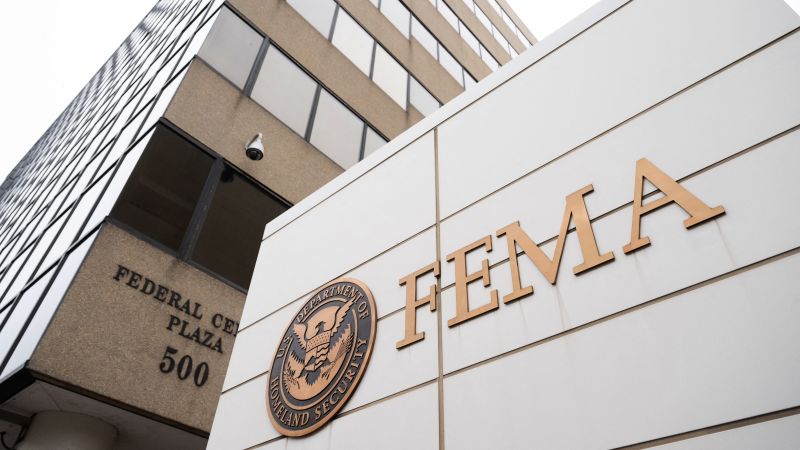The Federal Emergency Management Agency (FEMA), the primary federal agency responsible for delivering billions of dollars in aid to communities ravaged by natural disasters, is on the brink of losing a substantial segment of its workforce. This decline includes many experienced leaders who play crucial roles in managing disaster response operations. The significance of this workforce reduction cannot be overstated, particularly given the looming hurricane season, which is just weeks away. Reports indicate that approximately 20% of FEMA’s permanent full-time staff, translating to about 1,000 workers, are expected to accept voluntary buyouts, a decision influenced by the latest staff reduction measures orchestrated by Elon Musk’s Department of Government Efficiency.
This pending wave of departures comes at a critical time. The loss of staff, especially those in management positions responsible for disaster response plans and recovery operations, is troubling for the agency. Various sources have highlighted that senior officials, who possess invaluable knowledge and experience, are among those leaving. This ‘brain drain’ raises concerns about the agency’s capacity to respond effectively to disasters. An anonymous FEMA official underscored this concern, stating that the reduction in staff negatively impacts FEMA’s ability to perform its duties in emergency situations.
Many of these expected departures stem from recent offers for deferred resignations or early retirements, as workers react to what has been described as an increasingly tumultuous environment within the agency. Earlier this year, a similar initiative saw over 800 FEMA personnel accept buyouts, although a larger pool was eligible for the program. This trend signals a troubling pattern where seasoned officials are more frequently opting to leave. A senior official candidly expressed that the workforce felt their contributions undervalued and cited concerns that the agency could be dismantled amid criticisms from higher authorities.
Amid these workforce changes, Secretary of Homeland Security Kristi Noem has made statements alluding to potential plans to “eliminate” FEMA entirely. This political backdrop adds another layer of anxiety for employees, many of whom have felt the sting of persistent critiques labeling FEMA as ineffective and unnecessary. Compounding this situation are investigations by the Department of Homeland Security, which have involved lie detector tests aimed at discerning media leaks within the agency, further cultivating an atmosphere of distrust and trepidation.
Senior officials have voiced grave concerns regarding the agency’s future. The departures could significantly alter FEMA’s leadership structure, leaving voids in areas that require seasoned experts. The ongoing workforce erosion is seen as part of a broader strategy that may seek to undermine the agency’s operational efficiency. Notably, many in the workforce are not easily replaceable, and their exit is likely to impede FEMA’s capability to manage its programs.
Looking forward, there are indications that further workforce reductions may be in the pipeline. Most FEMA personnel currently operate under the Cadre of On-Call Response Employees (CORE) and as Reservists, who have not been impacted by the latest wave of departures due to their ineligibility for recent buyout offers. However, concerns have emerged that these positions may also come under scrutiny or face reductions, which would subsequently limit the agency’s immediate response capabilities in crises.
Set against the backdrop of these internal challenges, the agency is reportedly struggling with funding restrictions, making preparations for hurricane season problematic. Sources within FEMA have reported delays in training programs, hiring freezes, and limited collaborative efforts between FEMA and state authorities. The atmosphere within FEMA has been characterized by fear and anxiety regarding the agency’s lack of a cohesive long-term strategy, which has left staff feeling uncertain and overwhelmed.
In conclusion, the impending mass departures from FEMA pose serious risks to the agency’s ability to respond effectively to natural disasters. As experienced leadership exits and the agency faces potential reductions in staffing, the future of FEMA remains uncertain, impacted by both internal and external pressures that threaten its foundational operations. Employees are left grappling with anxiety over the agency’s direction while navigating an environment fraught with challenges and shifting priorities in disaster management.



